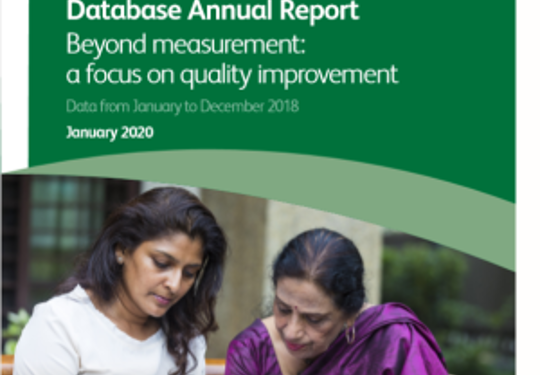The Fracture Liaison Service Database (FLS-DB) Annual report 2020 provides the third national benchmark for the performance of FLSs at the patient level and shows that there has been an improvement in most key performance indicators (KPIs) but further work is needed for effective and efficient service delivery.
Background
With over 300,000 fragility fractures in England and Wales every year detected in patients aged 50 years and over, and an ever-increasing ageing demographic, secondary fracture prevention is more important than ever as we work towards a lean and effective NHS.
Further to previous reports, we have found continued variation in each KPI, particularly identification and monitoring. Therefore, this report focuses on quality improvement and how this can be achieved by using the data already being collected as a reference point, and to provide impetus to ensure that each FLS is delivering an effective and efficient service.
To date, 69 FLSs have submitted patient data from over 180,000 patients across the NHS in England and Wales. The FLS-DB is still the only national secondary fracture prevention patient-level audit in the world.
Local commissioners and FLSs should use this report to improve the effectiveness in post-fracture care delivery from existing FLSs through service improvement and/or additional commissioning to reduce the number of preventable fragility fractures in this high-risk patient group.
- Given the known low persistence to anti-osteoporosis therapies, FLSs must urgently engage with their local primary care providers to develop improved pathways to improve monitoring, with documentation that captures the importance of treatment adherence in this vulnerable patient group.
- All FLSs should aim to detail the steps required to achieve identification of patients and submission of patient data onto the FLS-DB to 80% of expected case load for 2020/2021. This will require FLSs to define enhanced pathways for identification of fracture patients including those with spine fractures.
- Despite the increased volume of patients seen, the proportion assessed by FLSs receiving a dual-energy X-ray absorptiometry scan (DXA) within 90 days has remained relatively stable. With an expected increase in cases FLSs should regularly review their capacity in order to maintain standards of time to assessment, including DXA scans and monitoring.
- Maintaining effective delivery by an FLS is challenging. Time and support for Quality Improvement should be routinely embedded into the service specification of all FLSs to drive delivery of effective patient care.





